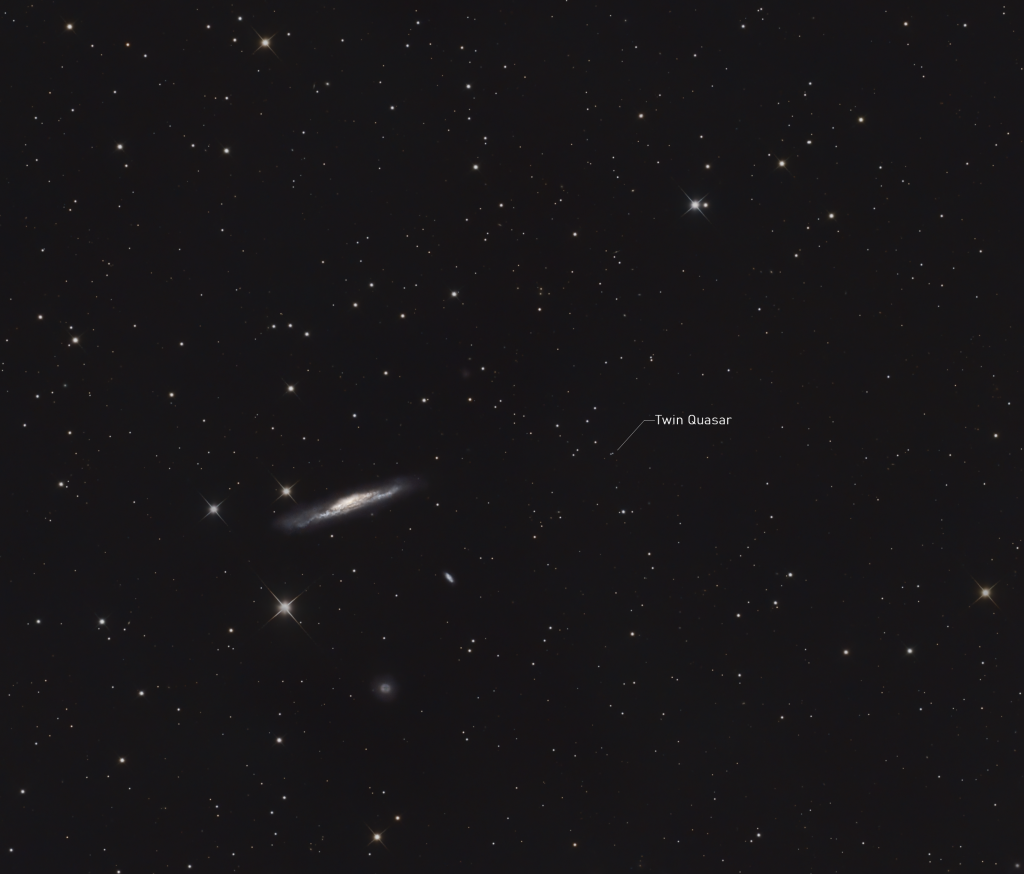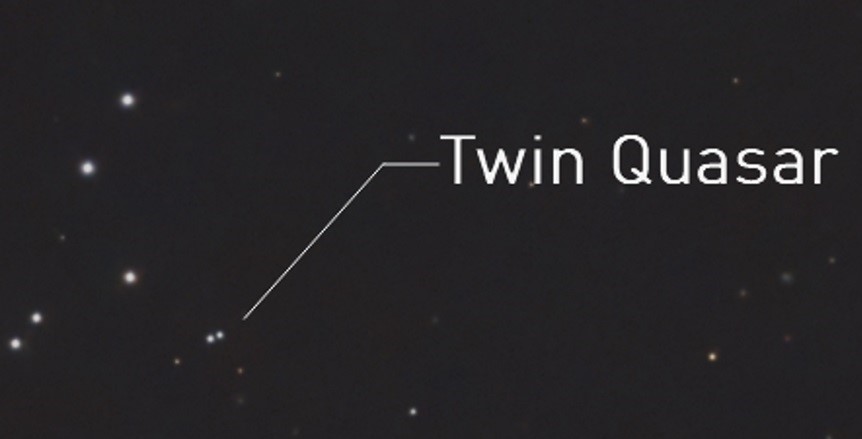Winter quasars
Last year we had a horrible fall season but wonderful clear skies in January. The same thing happened this year. We had 3 very cold nights (-15°C) with crisp clear skies this week. I could easily recognize Ursa Major, Auriga, Orion, Draco and many other constellations with the naked eye. But cold temperatures can be tricky to work with and the mount I use for astrophotography is known for having troubles in cold temperatures, the grease that is used to lube the gears can stiffen up and cause issues. It only started to occur on the second night but at least I was able to image a full night without too much issues.
I’ve been waiting for this period of the year for a while now and have a nice list of targets ready that I want to shoot. The plan is simple: less is more. Less targets but more integration time.
First on the list is the Twin Quasar in Ursa Major. This unique object was discovered in 1979 and is the first discovered proof of gravitational lensing. What we see are basically two images of the same object, distorted by the gravity of a nearby object, in this case a galaxy (not visible in the image). Einstein predicted this space-time warping in the 30s but also claimed in his paper: “Of course, there is no hope of observing this phenomenon directly.”
But here we are.
Around 8 hours of integration time gives this image of galaxy NGC3079 and the Twin Quasar.

